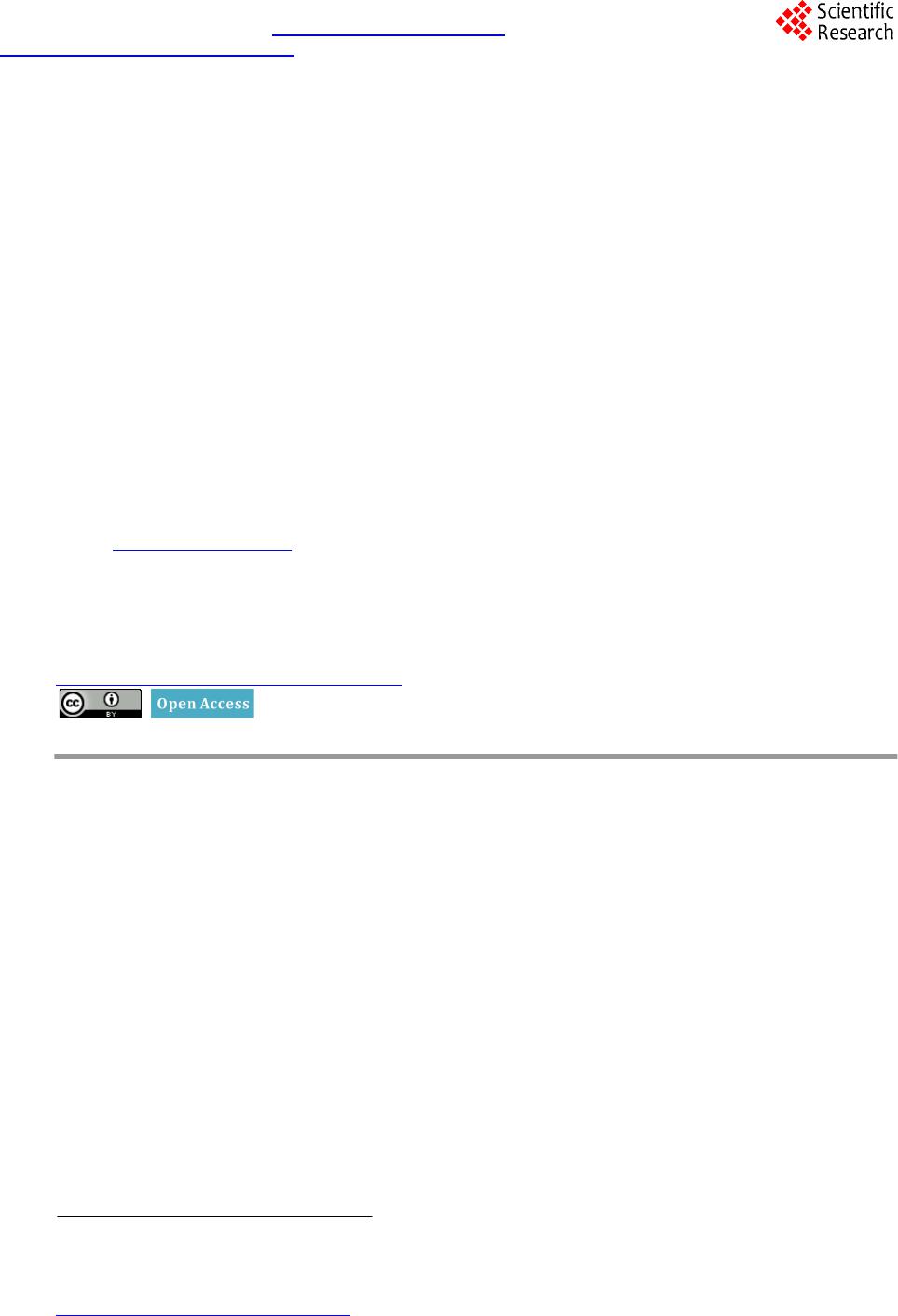 Journal of Biosciences and Medicines, 2014, 2, 51-57 Published Online March 2014 in SciRes. http://www.scirp.org/journal/jbm http://dx.doi.org/10.4236/jbm.2014.21006 How to cite this paper: Alzahrani, A.J., et al. (2014) Assessment of Genetic and Immunological Factors Associated with He- patitis C Infection in Saudi Hemodialysis Patients. Journal of Biosciences and Medicines, 2, 51-57. http://dx.doi.org/10.4236/jbm.2014.21006 Assessment of Genetic and Immunological Factors Associated with Hepatitis C Infection in Saudi Hemodialysis Patients Alhusain J. Alzahrani1*, Obeid E. Obeid2, Amein K. Alali3, Samir Al-Mueilo4, Yazeed Al-Sheihk1, Maaz Ulhasan5 1Depart men t of Clinical Laboratory Sciences, Colle ge of Applied Medica l Scien c es, King Sau d Uni ver sit y, Riyadh, KSA 2Department of Microb iology, College of Medi cin e, Un i ver si ty of Damma m, Dammam, KSA 3Depart men t of Bioch emi stry , College of Medi cine, Uni ver si t y of Dammam, Dammam, KSA 4Departm ent of Internal Medicine, College of Medicin e, Universit y of Dam mam, Damma m, KSA 5Depart men t of Genera l Surgery, King Fahad Med ical City , Riyadh, KSA Email: *ajalzahrani@ksu.edu.sa Received 6 January 2014; revised 10 February 2014; accepted 18 February 2014 Copyright © 2014 by authors and Scientific Researc h Publishing Inc. This wor k is licen sed under the Creat i ve Commons Attribution International License (CC BY). http://creativ ecommon s.org/l icenses/by /4.0/ Abstract The association of human l eukocyte antigen (HLA) genotype and h ep a ti tis C virus (HCV ) infection has been repo rte d in many populations. In ad diti on, the HLA genotyp e distribu tion h as been found to diffe r according to ethnicity. Currently, there are no publish ed dat a conce rni ng this rela tionship in the Saudi population. Therefore, th e p r ima ry obj ective of thi s study was to deter mine the rel a- tionship bet ween HLA genotype an d HCV infe cti on in a grou p of h aemod i alysis patient s in a ter- tiary hosp i tal in the E ast e rn Province of Saudi Arab ia. A total of 152 haem odi alysis patie n ts and 160 cont rols were e nrolled in the study. The patient g roup i ncluded 91 males and 61 females with a mean age of 48 years, who had been on haemodial ysis f or a pe ri od of 6 mont hs to f ive yea rs. The control gr ou p w as randomly selected f rom d ono rs atte nding the b l ood ba n k and incl ud ed 1 55 males an d five fem ales wi th a mean ag e of 38 yea rs. Of the p atien t group, 27 (17.8%) wer e f oun d to have HCV anti bodie s by EIA. The ser opos itivity w as co nfi rmed by RIBA and by RT-PCR. The av- erage vir al load was 15 × 103 HCV RNA per 10 μl of plasm a. The predominant HCV genotype was found to be genotyp e 4. HLA-class I an d HL A clas s II were screened in 27 HCV-positive pa tien ts and in 30 age and sex m atched c on trol s by p olym era se chain react ion/sequ en ce specific prim e rs (PCR/SSP) meth od . Me asu rements of cytok ines In terl eukin-2, 1 0, IFN-γ and TNFα sho wed th at IL-2 level was 17.65 - 2 0.3 p g/ l ; IFN-γ was 22.15 - 4 1.1 p g/ l; TNF -α was 2.5 - 5.6 pg/mL and IL-10 was 10.7 - 14. 8 pg/mL. Measu remen t of CD markers sh owed the f oll owi ng: C D3 cells were measured. There was no correl a tio n between infection with HCV and HLA type, cytokines levels and levels of *Corresponding author.  A. J. Alzahrani et al. different cell populations. CD marker s are similar in the HCV-positive and HCV-negative hemod ia- lysis pa tie nts . Fu r th er ana lysis and c omp ari son s are need ed, especi all y between the cytokines and CD markers in the hem odi alysis patien ts and c ont rol groups. Keywords HLA; CD Molecules; Cytoki nes; HCV; Hem odial ysis Patien ts 1. Introduction The number of patients on haemodialysis in Saudi Arabia is increasing with approximately 7020 patients cur- rently receiving therapy [1] [2]. These patients are at higher risk of acquiring post-transfusion HCV infection. Anti -HCV prevalence rates among haemod i a lys i s pa tients in Europe and Australia vary from 5.5% to 20%, whilst in Japan and Taiwa n the rates are between 18% to 47% [3]-[5]. Studies conducted in the 1990s using first-generation EIA tests revealed a prevalence of antibodies to hepati- tis C virus (a nt i-HCV) a mong Sa udi haemodialysis patients of 30.7% to 48.7% [6]-[10]. Howev er, later studies that used second-gene ration EIA and confirmatory tests, found that the pr evalence of anti-HCV ranged from 52.5% to 72.3% [11]-[15]. H owe v er, using HCV RNA assay, the prevalence rate reported by some centers reached as high as 94.7%. Furthe rmor e , Al Meshari et al. [16] reported a p revalence rate of anti-HCV of 88.4% among 43 haemodialys i s patients. However, t he same authors reported a prevalence rate of anti-HCV of 76% in the same group using third-generat i on recombinant immunoblot assay (RIBA 3.0). A more recent stud y by Qadi et al. [2] on 81 Bahraini and 34 Saud i ha e mod ia l ysi s patients revealed a preva le nce rate of HCV infection of 9.24% and 0.30%, respectively. The mo s t pr evalent HCV genot ypes in the B ahraini pa- tients were HCV 1a/1b and H CV 4, while the prevalent genotype s in the Saudi patients were HCV 2/ 2a a nd HCV 4. Althoug h blood transfusi on is the major cause of HCV infection in haemdialysis pa tie nts, a s t udy by Alfurayh et al. [17] sh owed that nosocomial transmission of HCV in haemodialysi s u nits also plays a significant role. In their stu dy, HCV RNA was found on the hands of some p ersonnel working with dialysis patients, in spite of ad- herence to standa rd precautions. Currently, there is limited data p ublishe d on the relations hip between HLA typ es and HCV infection in the Saudi population. The aim of this stud y was to determine the relationship between the HLA type s , immune sta- tus, and HCV infection a mon g Sa udi haemodialysis patients. 2. Patients & Methods 2.1. Patients and Subjects 2.1.1. Haemodi alysis Pa tie nts All the hae modialysis patient s in Ki n g Fa hd Hospital of the Unive rsi ty and King Fa hd Medical Military Com- plex haemod i alysis units from April 2008 to June 2010 were included in this study (N = 152). The s ampl e in- cluded new and pre-registered cases. 2.1.2. C ont rol G ro up The control group (N = 160) was ra n d oml y selected from donors attending the blood bank from April 2008 to June 2010. 2.2. Statistical Analysis Data we re analyzed using SPSS version 16 statistical package. Correlation and association were derived using different parameters such as bivariate and multivariate analysi s. A P-value of less than 0.05 wa s considered sig- nificant. 2.3. Ethical Consideration Thi s study was approved by the University of Dammam Ethical Committee. Signed written informed consent  A. J. Alzahrani et al. was obtained from each participant. 2.4. Procedure s 2.4.1. HCV Detec tion and Q u anti ta tio n For HCV a ntib ody detection, the collected sera wa s teste d by Axsym hepatitis C vir us enzyme immunoassay 3.0 (HCV EIA) (Abbott Laboratories, Abbott Park, IL, 60064), and a recombinant immunoblot assay (RIBA) HCV 3.0 SIA (Chiron Corporation, Emer yvi lle , CA 94608). Positive sera by both ELI SA and RIBA was tested by PCR (Amplicor Roche Diagnostic Sys t em , Hoffman Laroche, Basle, Switzerland) using p r i mers selected from the highl y conserved 5’-UTR of HCV geno me. Amplified prod uc t s were electrophoresed, photographed and analyzed. Extraction and amplificat ion of RNA was carried out according to the manufacturer’s recommenda- tions. Quantitation of viral loa d was performed using Amplico r Roche Diagnostic Sys t em, (Hoffman Laroche, Basle, Switzerland) and this was carried out according to the manufacturer’s recommendations. 2.4.2. HCV Genotyp ing Reverse T ranscription-polymerase chain reaction (RT -PCR) using specific primers from 5’-UTR was performed, and the amplif ie d products was genotyped/subtyped using commercial reverse phase hyperdization technique (Innolip a HCV, Inno genet i cs, B e lgiu m) accor ding to Si mmond’s classification [18]. 2.4.3. HLA Typing The HL A t ypin g was done using DNA HLA typing procedures (PCR-se que nc e specific primers; PCR-SSP; One Lambda, Inc.). 2.4.4. Lym phocyt e Mark e r s Who l e blood sa mp l es were used . T he following lymphocyte cell markers were analyzed: CD3, CD4, CD8, CD16, and CD19 using Flowcytomet ry (BD, USA). Values obtained from test groups were compared with nor- mal range. 2.4.5. Cy tokine Patt e rn Serum levels of interle uki n 2 and 10, interfe ron γ and TNFα was assessed using ELI S A kits (B i nd ing Sites, UK). 3. Results 3.1. Patients and Con t rol s A total of 152 patients and 160 controls were recruited from hospitals in the Eastern Province of Saudi Arabia. Patients i ncluded hemodialysis and nephrology unit patient s, includ i ng kidney transp l ant patient s. The me an age of the patients was 48 years of age. They incl uded 91 mal es and 61 females. The period of hemod i a lysis varied between 3 months to 5 years. The control group include d blood donors attending the Blood Bank (me a n age 38; 155 males and 5 females). 3.2. Analysis of HCV Infection in Patients and Controls Fro m the tota l of 152 patients, 27 were found to have HCV antibodies as determined by EIA (17.8%). The se- ropo sitivity of these samp les was con firmed by RIBA and RT-PCR. The average viral load was found to be 15 × 103 HCV RNA per 10 μl of plasma. The p a tte rn of HCV genotypes in the 27 HCV positive patie nts wa s genotype 4:14 (51.9%); genotype 1:11 (40.7%) and geno type 5a: 2 (7.4%). None of the subjects in the control groups tested p ositive for HCV antibo- dies or RNA. 3.3. Determination of HLA Types in HCV -Positive Patients and Controls The 27 HCV-po sitive patients and 30 age and sex matched controls were screened for HLA-class I and HLA class II were screened in by polymerase chain r eaction usi ng seque nc e specific p r imers (PCR/SSP) method. The  A. J. Alzahrani et al. following types were detected: HLA-A9, A11, A19, A32, B5, B7, B8, B15, B17, B27, B35, B40, Bw6 , Cw6, C w7, DR1, DR2, DR3, D PB1, DQ1, DQB1, DRB1, DQP1, DR4, DR7, DR10, DR15, DR16, DR51 and DR53 (Table 1). B7, CW6, CW7, and DR7 showed t he highest gene fr equenc ies of 22.1%, 17%, 9.2% and 26.9%, respectively. Howev er, haplotypes A9-B7, A11-B15, A32-B5, A12-B27, A19-B w6, A32-B27 and B35-C w7 showed the highest frequencies. 3.4. Analysis of Cytok ines and CD Molecules in Test and Control Groups Measurements of cytoki nes Int e rleukin-2, 10, IFN-γ and TNFα sh owe d that IL-2 level was 17.65 - 20.3 pg/l; IFN-γ was 22.15 - 41.1 pg/l; TNF-α wa s 2.5 - 5.6 pg/mL a nd IL-10 wa s 10.7 - 14.8 pg/mL (Table 2). No stat is- tically significant difference was found between cytokine levels in t he test and control groups (p > 0.05). Measurement of CD markers (Table 3) showe d the level of CD3 cells were between 1000 - 4000 µL; CD4 cells between 500 and 1600 µL; CD8 cells between 375 and 1100 µL; CD16 cells between 300 - 1530 µL and CD19 cells bet ween 132 - 523 µL. No statistically s i gni fica nt difference was found between levels of different cells in the test a nd control gro ups (p > 0.05). Table 1. Frequency of HLA class I and class II in test and controls. HLA cla ss I type Frequency HLA cla ss I typ e Frequency A9 3 A11 4 A19 5 A3 2 4 B5 7 B7 18 B8 5 B15 3 B17 8 B27 4 B35 6 B40 2 Bw6 6 Cw6 20 Cw7 19 HLA cla ss II typ e Frequency HLA cla ss II ty p e Frequency DR1 5 DR2 5 DR3 4 DPB1 3 DQ1 7 DQB1 9 DRB1 3 DQP1 8 DR4 11 DR7 20 DR10 7 DR15 11 DR16 5 DR51 8 DR53 8 Table 2. Cytokine levels (mea n ± SD). Cytokine Level in test group Level in control group IL-2 18.2 ± 1.7 pg/l 17.9 ± 2.7 pg/l IL-10 13.5 ± 2.3 pg/l 12.3 ± 2.1 pg/l IFN -γ 36.7 ± 1.9 pg/l 35.9 ± 2.8 pg/l TNFα 3.8 ± 1.5 pg/ l 3.1 ± 1.8 pg/ l  A. J. Alzahrani et al. Table 3. CD molecules levels (mean ± SD). Cell marker Level in test group Level in control group CD3 3800 ± 108/µL 3901 ± 307/µL CD4 1208 ± 98/µL 1353 ± 227/µL CD8 883 ± 69/µL 907 ± 89/µL CD16 505 ± 57/µL 699 ± 97/µL CD19 689 ± 68/µL 564 ± 45 /µL 3.5. Correlation between HCV I n fe ct i on and HLA Type and Immune Status in the Haemodialysis Patients No corr e la tion wa s found between HCV p ositive and the control groups in relation to cytokines and CD markers, between infection with HCV and HLA type, a nd the cytokines levels. 4. Discussion T wo studies, which were conducted by Al-Mugeiren et al. [19] and Soyannwo et al. [20] on pediatric and adult hae modialysi s S aud i patients, revealed HCV infect ion rates of 11.2% and 50%, respectively. The HCV infection rate in the group of patients that we stud i ed was 17.8%. This difference could be attributed to a number of fac- tors, includ ing t he length of time that the patie nt groups had been receiving hae modialysi s. In addition, previous studies cond ucted on Saudi haemodialysi s patients with HCV infection have shown that genotype 4 is the mo s t prevalent with a range of 36% to 55%. In the p resent st u dy, the most pr evalent genotype was also found to be genotype 4 with a prevalence rate of 51%, whi ch is in line with the p revious studies. O ther prevalent genotypes in o ur study were genotype 1 and 5a, which is also in line with other studies. A study by White et al. [21], which compared HLA typ e s in the G ulf regi on, revealed that the prevalence of various HLA ant igens differed significantly between various Gulf countries, includ ing Oman, Kuwait and S a udi Arabia. The invest igat ors also reported that HLA-DR2, which has the highest prevalence worldwide, had vary- ing prevalence rates in the Gul f countries, with the Omani population having the highe st prevalence of HLA- DR2. Howev er, HLA-A, -B, -C and DR loci antigen frequencies were d etermined by She t h et al. [2 2] on no r ma l Saudi subj ects sh owe d t ha t B21, CW4, CW7, a nd Dr7 had the highe st frequencies, which is co mparable to the present results. A number of studies have reported a possible association between HLA genotype and HCV infection. Had- houd et al. [23] studied this association in 146 HCV positive renal transplantation patients and 122 HCV nega- tive indi vi dua l s and repo rted a possible association between the expression of HLA alleles and HCV infec tio n. Another study, by Fitzmaurice et al. [24], exa mi ned the relations hip in a cohort of HCV patients and reported a potential protective impact of HLA-A on HCV infect ion. Cangussu et al. [25] reported that polymorphic resi- dues p resented on different DRB 1*1 1 and/or DQB1*03 alleles were found to be responsible for resi stance against HCV infec tion. In the present study no association was found between HLA genotype and HCV infection in the Saudi cohort studied. This discrepancy could be due to the small s ampl e s iz e incl uded in this s tu dy. To confirm whether there is an association a larger sample size needs to be include d. 5. Summary, Sugg est ions and Recommendations The prevalence of HCV infection and its association with HLA genotype were identified in 152 Saudi hemo - dialysis patients and in 160 controls. The level of cyto kines and immune cells in the same cohort were studied. No association was found between different HLA alleles and HCV infectio n in this p opulat i on. A larger mult i- centre study should be conducted to ascertain these r esults. Acknowle dgme nts Thi s wo rk was partially supported by a grant from the National Pla n for Science and T echnology, King Abdula-  A. J. Alzahrani et al. ziz City for Science and Technology. References [1] Jondeby, M.S., De-Los Santos, G.G., Al-Ghamdi, A.M., Al-Hawas, F.A., Mousa, D.H., Al-Sulaiman, M.H. and Al-Khader, A.A. (2001) Caring for Hemodialysis Patients in Saudi Arabia. Past, Present and Future. Saudi Medical Journal, 22, 199 -204. [2] Qadi, A.A., Tami m, H., Ameen, G., Bu-Ali, A., Al-Arrayed, S., Fawaz, N.A. and Al ma wi, W.Y. (2004) Hepatitis B and Hepatitis C Virus Prevalence among Dialysis Patients in Bahrain and Saudi Arabia: A Survey by Serologic and Molecular Methods. American Journal of Infection Control, 32, 493-49 5. http://dx.doi.org/10.1016/j.ajic.2003.12.009 [3] Gilli, P., Moretti, M., Soffritti, S. and Me nini, C. (1990) Anti -HCV Positive in Dialysis Units? Lancet, 336, 243-244. http://dx.doi.org/10.1016/0140-6736(90)91766-4 [4] Willems, M., de Jong, G., Moshage, H., Verresen, L., Goubau, P., Desmyter, J. and Yap, S.H. (1991) . Surrogate Mark- ers Are Not Useful for Identification of HCV Carriers in Chronic Hemodialysis Patients. Journal of Medical Virology, 35, 303-306. http://dx.doi.org/10.1002/jmv.1890350417 [5] S a ka mo t o , N., Enomoto, N., Marumo, F. and Sato, C. ( 1993) . Prevalence of Hepatitis C Virus Infection among Long- Term Hemodialysis Patients: Detection of Hepatitis C Virus RNA in Pl a s ma. Journal of Medical Virology, 39, 11-15. http://dx.doi.org/10.1002/jmv.1890390104 [6] Saeed, A.A., Fairclough, D., Al-Adma wi , A.M., Bacchus, R., Al-Raseed, A.M., et al. (1990) Hepatitis C Virus in Saudi Arabia: A Preliminary Survey. Saudi Medical Journal, 11, 331-332. [7] Mitwalli, A., Al -Mohaya, S., Al -Wakeel, J., El Gama l , H., Rotimi, V., et al. (1992) Hepatitis C in Chronic Renal Failure Patients. American Journal of Nephrology, 12, 288-291. http://dx.doi.org/10.1159/000168462 [8] Ayoola, E.A., Huraib, S., Ar if , M., Al-Faleh, F.Z., Al -Rashed, R., et al. (1991) Prevalence and Significance of Anti - bodies to Hepatitis C Virus among Saudi Hemodialysis Patients. Journal of Medical Virology, 35, 155-159. http://dx.doi.org/10.1002/jmv.1890350303 [9] Al -Nasser, M.N., Al-Mugeiren, M.A., Assuhaimi, S.A., Obineche, E., Onwabalili, J., et al. (1992) Seropositivity to Hepatitis C Virus in Saudi Hemodialysis Patients. Vox Sanguinis, 62, 94-97. http://dx.doi.org/10.1111/j.1423-0410.1992.tb01177.x [10] Al -F u r ayh, O., Sobh, M. and Bual i, A.R. (1992) Hepatitis C Virus Infection in Chronic Hemodialysis P atients, a Cli- nicopathologic Study. Nephrology Dialysis & Transplant, 7, 327-332. [11] Al -Jiffri, A.M., Fadag, R.B., Ghabrah, T.M. and Ibrahim, A. (2007 ) Hepatitis C Virus Infection among Patients on Hemodialysis in Jeddah: A Single Center Experience. Saudi Journal of Kidney Disease & Transplantation, 14, 84-89. [12] Al -Muhanna FA (1995). Hepatitis C virus infection among hemodialysis patients in the Eastern region of Saudi Arabia. Saudi Journal of Kidney Disease & Transplantation,6, 125-127. [13] Al -Shohaib, S.S., Abdelaal, M.A., Zawa wi , T.H., Abbas, F.M., Shaheen, F.A., et al. (1995) The Prevalence of He- patitis C Virus Antibodies among Hemodialysis Patients in Jeddah Ar ea , Saudi Arabia. Saudi Journal of Kidney Disease & Transplantation, 6, 128-131. [14] Bernieh, B., Allam, M., Halepota, A., Mohamed, A.O., Parkar, J., et al. (1995) Prevalence of Hepatitis C Virus Antibodies in Hemodialysis Patients in Mad i n ah Al -Munawarah. Saudi Journal of Kidney Disease & Transplantation, 6, 132-135. [15] Shaheen, F.A.M., Huraib, S.O. an d Al-Rasheed, R. (1995) Prevalence of Hepatitis C Antibodies among Hemodialysis Patients in the Western Province of Saudi Arabia. Sa udi Jou r nal of Kidney Disease & Transplantation, 6, 136-13 9. [16] Al Meshari, K., Al Ahdal, M., Al fur ayh, O., Ali, A., De Vol, E. and Kessie, G. (1995) New Insights into Hepatitis C Virus Infection of Hemodialysis Patients: The Implications. American Journal of Kidney Disease, 25, 572-578. http://dx.doi.org/10.1016/0272-6386(95)90125-6 [17] A l f u r a yh , O., Sabeel, A., Al Ahdal, M.N., Almeshari, K., Kessie, G., et al. (2000) Hand Contamination with Hepatitis C Virus in Staff Looking after Hepatitis C-Positive Hemodialysis Patients. American Journal of Nephrology, 20, 103- 106. http://dx.doi.org/10.1159/000013565 [18] Shobokshi, O.A., Serebour, F.E., Skakni, L, Al-Saffy, Y.H. and Ahdal, M.N. (1999) Hepatitis C Genotypes and Sub- typ e s in Saudi Arabia. Journal of Medical Virology, 58, 44-48. http://dx.doi.org/10.1002/(SICI)1096-9071(199905)58:1<44::AID-JMV6 >3.0.CO;2-U [19] Al -Mugeiren, M., Al -Rasheed, S., Al-Salloum, A., El-Zouki, A., Al -Sohaibani, M., et al. (19 96) Hepatitis C Virus Infection in Two Groups of Paediatric Patients: One Maintained on Haemodialysis and the Other on Continuous Ambulatory Peritoneal Dialysis. Annals of Tropical Paediatrics, 16, 335-339. [20] Soyannwo, M.A., Khan, N., Kommajosyula, S., Abdel Rahman, A.R., Khadaji, M., et al. (1996) Hepatitis C Ant i -  A. J. Alzahrani et al. bodies in Haemodialysis and Pattern of End-Stage Renal Failure in Gas sim, Saudi Arabia. African Journal of Medicine 7 Medical Sciences, 25, 13-22. [21] White, A.G., Leheny, W., Kuchipudi, P., Varghese, M., Al R i ya mi , H., et al. (1999) Histocompatibility Antigens in O man i s : Comparison with Other Gu lf Populations and Implications for Disease Association. Annals of Saudi Medicine, 19, 193-196. [22] Sheth, K.V., Edwards, J.A. and Godwi n , J.T. (1987). Study of the HLA Gene and Antigen Frequenc y from a Saudi Arabian Hospital. Ti s sue Antigens, 25, 156-162. http://dx.doi.org/10.1111/j.1399-0039.1985.tb0 0430. x [23] Hadhoud, A., Abdulaziz, A.M., Menawi, L.A., Shaheen, F.A., Abdulghaffar, A., et al. (2003) The Relationship between HLA Typing and HCV Infection and Out c o me of Renal Transplantation in HCV P ositive Patients. Ex- perimental & Clinical Transplantation, 1, 19-25. [24] Fitzmaurice, K., Petrovic, D., Ramamurthy, N., Simmons, R., Merani, S., et al. (2011) Molecular Footprints Reveal the Impact of the Protective HLA-A*03 Allele in Hepatitis C Virus Infection. Gu t , 60, 1563-15 71. http://dx.doi.org/10.1136/gut.2010.228403 [25] Cangussu, L.O., Teixeira, R., Campos, E.F., Ra mp i m, G.F., Mingoti, S.A., et al. (2011) HLA Class II Alleles and Chronic Hepatitis C Virus Infection. Scandanavian Journal of Immunology, 74, 282-287. http://dx.doi.org/10.1111/j.1365-3083.2011.02568.x
|